Library of the Week: 23rd May – We are very lucky to feature the Society of Antiquaries of London Library this week! Find out more in this brand new blog post which features more about the amazing collections. Thank you to the Society of Antiquaries of London Library for taking part.

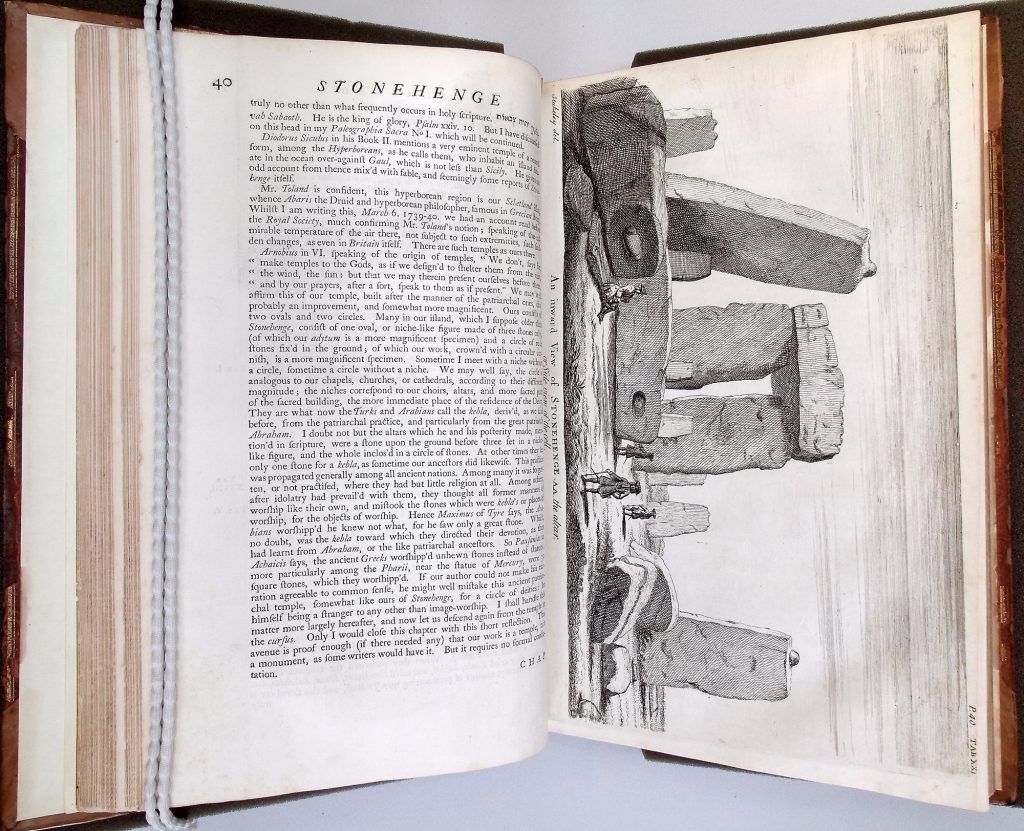
The Society of Antiquaries of London Library at Burlington House is the largest antiquarian library in the country. The Library contains around 130,000 printed items from the late-15th century to the present day. Our particular collecting focus is the material remains of the past in Britain, covering archaeology, antiquities, books and print history, the history of antiquarianism and collecting, historic monuments, local British history, heraldry, medieval decorative arts, and architectural history. Catalogue records for printed books, journals, ephemera and e-resources are searchable in our Library catalogue, and we upload our records to Library Hub Discover on a monthly basis. Our historic holdings are also included in the ESTC.
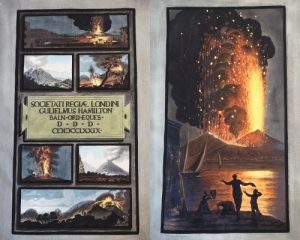
As much of the collection has amassed from centuries of donations and bequests from Fellows (the elected members of the Society of Antiquaries of London who are entitled to use the post-nominals FSA), it reflects the diverse interests of many different collectors and writers. One of my favourite aspects of my role as Librarian is encountering all sorts of weird and wonderful things that have made their way into the Library, often with their own fascinating provenance! Our historical collection includes books on an array of subjects of interest to antiquaries: witchcraft, political history, traditions and customs, medical history, geometry, the natural world, astrology, astronomy, warfare, navigation, travel… to name just a few!
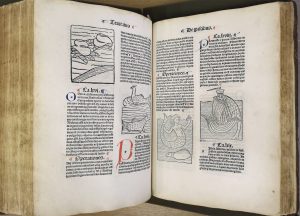
We have a fantastic collection of around fifty incunabula (books printed before 1501). My favourites include our two editions of the magnificent ‘Liber chronicarum’ (Nuremberg Chronicle) from the 1490s, the most extensively-illustrated book of the 15th-century; a 1475 edition of ‘Legenda aurea sanctorum’ (The Golden Legend) with hand-coloured woodcuts; and the wonderful ‘Ortus Sanitatis’ (The Garden of Health), 1491, the first natural history encyclopedia, full of woodcuts of plants, stones, birds, fish and animals – both real and fantastical!
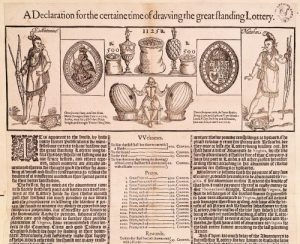
One of our early important donations was a collection of printed broadsides and proclamations by philosopher Thomas Hollis in 1757. Many are unique surviving copies, such as a Jacobean broadside printed in 1615 by the Virginia Company, which had been set-up in 1606 to establish settlements on the coast of North America. Fifteen unique broadsides were printed by the Virginia Company and five are preserved in our Library collection. We have a rare proclamation announcing the reign of the fifteen-year-old Lady Jane Grey on 10th July 1553; Jane is known to history as the “Nine Days’ Queen” as she was deposed by the Catholic daughter of Henry VIII, Mary, only nine days later. You can even hear some of our rare Tudor broadside ballads being sung on the website of the freely-accessible EBBA (English Broadside Ballad Archive), including a “godly dittie” dedicated to Elizabeth I, printed in 1586 and now only extant in our Library.
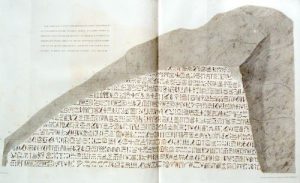
The Library also houses important early works published by the Society itself, including our flagship journal, ‘Archaeologia’, which began in 1770, and ‘Vetusta monumenta’ (Ancient Monuments), published from 1718-1906. The latter is a series of illustrated antiquarian papers on a range of historical sites and objects, mostly in Britain; including coins, seals, documents, buildings, wall paintings, mosaics, and artefacts. Some of the earliest-published research on the Rosetta Stone appeared in Vetusta Monumenta in 1803. A fantastic project hosted by the University of Missouri is currently underway to create a free digital scholarly edition of the first three volumes, with high-quality images and new academic commentary for each plate.
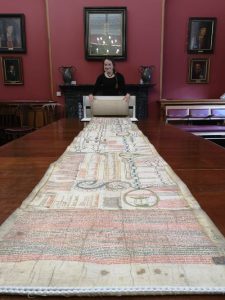
As this blog is for Library Hub Discover, I have been focusing on our printed material, but it would be a huge oversight not to mention our other outstanding collections – many of which are of national significance. My colleagues who look after our archives and museum collections are working hard to add and improve records in our new Collections Catalogue (containing archives, manuscripts, museum objects and prints & drawings). Thanks to successful fundraising campaigns, we are undertaking numerous digitisation projects to make more of our unique holdings available online for free. These include digitising the first hundred years of Society’s early Minute Books (an incredibly important record of early antiquarian activities, discoveries and scholarship), a number of ‘adopted’ medieval manuscripts, and our immense 40ft, 15th-century Roll Chronicle. Watch this space!
The Collection Highlights pages of our website shine a spotlight on some of our most special and unique items. Over the summer our team recorded a series of YouTube videos about the different areas of our collection and the resources we offer. We also share the collections on the Society’s social media channels and updates about the Library in SALON (the Society’s fortnightly public newsletter). We have a small exhibition space in the Library, and I am currently writing a series of blogs to tie-in with our new display on antiquarian fakes and forgeries – the first blog is up now.
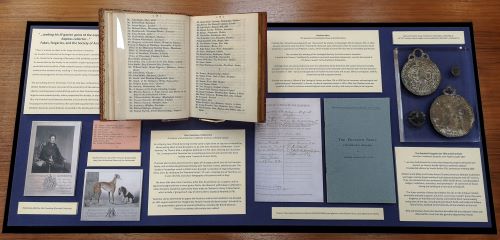
Though the Society’s future at Burlington House is currently uncertain, we are committed to sharing our collections with the public and expanding access to the Library. In many ways, it is an exciting time of change. Since I started my role at the Society in 2019, we have overhauled our Library and Collections catalogues with modern systems, significantly expanded our e-resources offering to Fellows, and improved on-site scanning and copying facilities. We have just joined SCONUL at Band A, which gives staff and postgraduate research students from participating institutions reciprocal access to our Library (we will be making an official announcement about SCONUL via the Society’s channels in due course). And the Society itself will be announcing an Affiliate Membership Scheme on 27th June, which will open up membership of the Society to all, and includes free entry to Burlington House and use of the Library.
Lastly, please do get in touch if you’re interested in visiting and using the Library, have queries about anything I’ve mentioned in this blog, or just want to find out more: library@sal.org.uk
Rebecca Loughead – Librarian
All images ©The Society of Antiquaries of London
You can explore the library’s collections on Discover and find further contact details on their Discover information page.

